Strategic application of advanced superalloys(HY-marketing departmentes)
advanced superalloys overview
In the development of advanced engines in the world, the amount of high-temperature alloy materials has accounted for 40% to 60% of the total engine. Therefore, high-temperature alloy materials are also known as “advanced engine cornerstones”. In addition, high-temperature alloys also play an important role in the power, transportation, and petrochemical industries.
The aero engine is called “the flower of industry”, and it is one of the most technical and difficult parts in the aviation industry. As an aero engine of an aircraft power plant, it is particularly important that metal structural advanced superalloys have properties such as light weight, high strength, high toughness, high temperature resistance, oxidation resistance, and corrosion resistance, which are almost the highest performance requirements among structural materials.
High temperature alloys are widely used in aviation industry, power industry, petrochemical industry, transportation industry and gas turbine industry due to their excellent high temperature resistance.
1. Application in aerospace
In modern advanced aero engines, the amount of high-temperature alloy materials accounts for 40%-60% of the total engine. In aero-engines, high-temperature alloys are mainly used in the four hot section components of the combustion chamber, guide vanes, turbine blades and turbine disks; in addition, they are also used in components such as casings, rings, afterburners and tail nozzles.
1.1 Combustion chamber
-
The combustion chamber is the birthplace of power machinery energy. The temperature of the gas produced in the combustion chamber is between 1500 and 2000°C. Because compressed air flows in the rest of the space, the bearing temperature of the alloy material of the combustion tube is generally above 800~900℃, and locally reaches 1100℃. Therefore, the combustion tube requires the material to have high temperature oxidation resistance and gas corrosion resistance, and good cold and hot fatigue performance.
-
 The main high-temperature alloy used in the combustion chamber is mainly nickel-based high-temperature alloy or cobalt-based high-temperature alloy. For example, the third generation fighter F100 engine uses Haynes 188 cobalt-based superalloys, and the F110, F404 and F414 engines use Hastelloy X nickel-based superalloys. However, as the thrust-to-weight ratio of the aircraft increases, new requirements are placed on the material of the combustion tube. The combustion cylinder of the fourth generation fighter is mainly nickel-based superalloy and coated with ceramic thermal expansion coating, and adopts new combustion chamber structure, such as F119 and F135 using floating wall structure, while F136 engine uses Lamilloy structure. In the fifth generation of fighters, Lamilloy structured high-temperature alloys, high-temperature-resistant 1482°C ceramic composite materials and thermal expansion coatings were mostly used. Therefore, in order to meet the requirements of the new thrust-to-weight ratio of aero engines, new material substrates and advanced superalloys in the preparation process are urgently needed to be developed.
The main high-temperature alloy used in the combustion chamber is mainly nickel-based high-temperature alloy or cobalt-based high-temperature alloy. For example, the third generation fighter F100 engine uses Haynes 188 cobalt-based superalloys, and the F110, F404 and F414 engines use Hastelloy X nickel-based superalloys. However, as the thrust-to-weight ratio of the aircraft increases, new requirements are placed on the material of the combustion tube. The combustion cylinder of the fourth generation fighter is mainly nickel-based superalloy and coated with ceramic thermal expansion coating, and adopts new combustion chamber structure, such as F119 and F135 using floating wall structure, while F136 engine uses Lamilloy structure. In the fifth generation of fighters, Lamilloy structured high-temperature alloys, high-temperature-resistant 1482°C ceramic composite materials and thermal expansion coatings were mostly used. Therefore, in order to meet the requirements of the new thrust-to-weight ratio of aero engines, new material substrates and advanced superalloys in the preparation process are urgently needed to be developed.
1.2 Guide vanes
-
The guide vane is one of the parts that are subject to the greatest thermal shock on the turbine engine. But because it is stationary, the mechanical load is not large. Usually due to stress-induced twisting, cracks caused by rapid temperature changes and burns caused by over-combustion, the guide blades often fail during operation. According to the working conditions of the guide blade, the advanced superalloys is required to have the following properties: sufficient endurance strength and good thermal fatigue performance; high resistance to oxidation and corrosion.
-
Casting advanced superalloys has become the main manufacturing material for guide vanes. American Howmet Company, etc. mostly use IN718C, PWA1472, Rene220 and R55 alloys as the material of the guide blades. In recent years, due to the development of directional solidification technology, the process of manufacturing guide vanes with directional alloys is also in trial production. In addition, oxide dispersion-strengthened advanced superalloys are used in the manufacture of the rear grate ring of FWS10 engine turbine guides.
1.3 Turbo disk
-
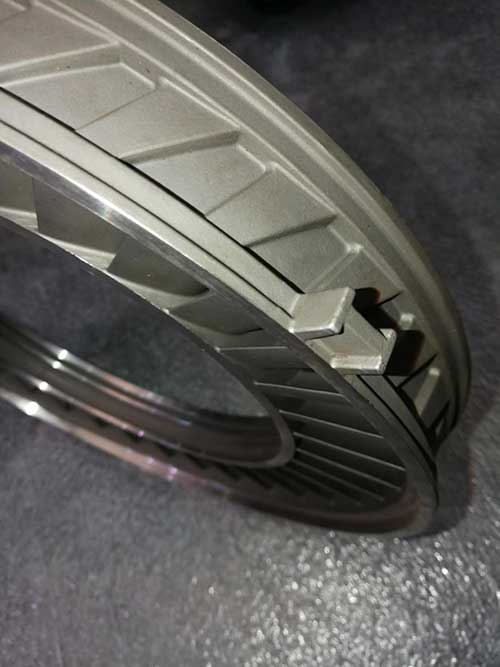 The turbine disk is unevenly heated during operation, and the rim of the disk is subjected to a higher temperature than the center, resulting in great thermal stress. The tenon tooth part bears the maximum centrifugal force, and the stress is more complicated. For this reason, the requirements for turbine disk materials are: the alloy should have high yield strength and creep strength; good cold and heat and mechanical fatigue resistance; the linear expansion coefficient should be small, no notch sensitivity, and high low cycle fatigue performance.
The turbine disk is unevenly heated during operation, and the rim of the disk is subjected to a higher temperature than the center, resulting in great thermal stress. The tenon tooth part bears the maximum centrifugal force, and the stress is more complicated. For this reason, the requirements for turbine disk materials are: the alloy should have high yield strength and creep strength; good cold and heat and mechanical fatigue resistance; the linear expansion coefficient should be small, no notch sensitivity, and high low cycle fatigue performance. -
Powder superalloys are a must-have material for modern high-performance engine turbine disks. In 1965, high-purity pre-alloy powder technology was developed. The US P&WA (Pratt & Whitney Aircraft) company first pioneered the use of powder superalloy discs for aero engines. In 1972, IN100 powder superalloy turbine disk was used on F100 engine, which opened the practical application stage of powder superalloy.
-
The research of powder advanced superalloys in my country started in the late 1970s. In the subsequent development process, according to national model requirements, the development of FGH95 alloy, FGH96 alloy, FGH97 alloy, FGH98 alloy and FGH91 alloy were carried out successively. Among them, FGH95 is currently the highest strength powder superalloy with a maximum operating temperature of 650°C. It is mainly used to prepare turbine disk baffles for engines and turbine disks for helicopters.
-
At present, in the field of powder superalloys, the United States, Russia, the United Kingdom, France, Germany, Canada, Sweden, China, Japan, Italy and India have carried out research work, and the United States, Russia, United Kingdom, France, Germany and China and other countries have mastered the research work. In the industrial production process, only the United States, Russia, France and the United Kingdom can independently develop powder superalloys and establish their own alloy grade series.
1.4 Turbine blade
-
Turbine working blades are one of the most critical components on turbine engines. Although the operating temperature is lower than that of the guide blades, the stress is large and complicated, and the working conditions are harsh. Therefore, the turbine blade materials are required to have: high resistance to oxidation and corrosion; high resistance to creep and permanent fracture; good The mechanical fatigue and thermal fatigue performance and good comprehensive performance of high temperature and medium temperature.
-
The material used for turbine blades was originally a deformed superalloy. With the development of material development technology and processing technology, cast superalloys have gradually become candidates for turbine blades. The United States began to use cast superalloy turbine blades in the late 1950s, the former Soviet Union applied cast turbine blades in the mid-1960s, and the United Kingdom adopted cast turbine blades in the early 1970s. The aeroengine continues to pursue high thrust-to-weight ratios, prompting domestic and foreign companies to develop new superalloys since the 1970s, and has successively developed new materials with excellent high-temperature properties such as directional solidification superalloys and single crystal superalloys. The single crystal superalloy material has become the mainstream turbine disk material.
-
Single crystal superalloys are a class of advanced engine blade materials developed on the basis of equiaxed and oriented columnar superalloys. Since the early 1980s, the first generation of single crystal superalloys PWA1480, ReneN4, etc. have been widely used in a variety of aero engines. Since the late 1980s, the second-generation single crystal superalloy blades represented by PWA1484 and ReneN5 have also been widely used on CFM56, F100, F110, PW4000 and other advanced aeroengines. , And widely used in military and civil aviation engines.
-
Since the late 1990s, the United States has successfully developed the third generation single crystal superalloy CMSX-10. After that, GE, P&W and NASA jointly developed the fourth-generation single crystal superalloy EPM-102. France and the United Kingdom have also developed single crystal superalloys, respectively, and achieved engineering applications. In recent years, Japan has successfully developed the fourth, fifth, and sixth generation single crystal alloys TMS-138, TMS-162, TMS-238, etc. with higher temperature resistance.
-
China’s single crystal superalloy was first researched by the Aviation Industry Institute of AVIC in the early 1980s, and successfully developed China’s first generation single crystal superalloy DD4. In the 1990s, it successfully developed the second generation single crystal superalloy Alloy DD6, and widely used in many types of advanced aircraft engines. In addition, China’s third-generation single crystal superalloys mainly include DD9 and DD10 developed by the Key Laboratory of Advanced High-Temperature Structural Materials of the Beijing Institute of Aeronautical Materials, DD32, DD33 developed by the Superalloy Research Department of the Institute of Metal Research, Chinese Academy of Sciences, and Metal Research of the Chinese Academy of Sciences The developed DD90; the fourth generation single crystal superalloy is DD22 developed by the Institute of Metal Research, Chinese Academy of Sciences; the fifth generation single crystal superalloy is a rhenium-containing superalloy material developed by Shaanxi Refining and Nonferrous Metals. These materials are currently limited to laboratory research and development.
-
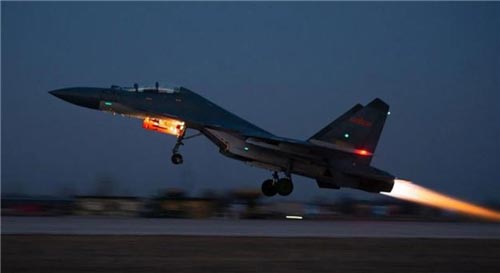 As a number of three-generation half-fighter aircraft represented by J-10B, J-15, and J-16 have entered the line-up, the demand for WS-10 engines continues to grow; with the installation of the domestic large-scale transport aircraft, -20, the large bypass ratio engine also It will enter mass production, which will directly drive the rapid development of high-temperature alloys for aircraft engines. In order to improve the technology of high-temperature alloy materials, the Ministry of Industry and Information Technology in the “China Additive Manufacturing Industry Development Promotion Plan (2015-2016)” clearly requires breakthroughs in high-temperature alloys and other material technologies. In order to meet the requirements of China’s aviation industry for high-temperature alloy materials, China should continue to develop and develop high-level, high-quality high-temperature alloy materials on the basis of past work, to stabilize the performance and quality of existing system products, research and Explore the successor new high-temperature materials whose working temperature exceeds 1100℃, and improve China’s high-temperature alloy system.
As a number of three-generation half-fighter aircraft represented by J-10B, J-15, and J-16 have entered the line-up, the demand for WS-10 engines continues to grow; with the installation of the domestic large-scale transport aircraft, -20, the large bypass ratio engine also It will enter mass production, which will directly drive the rapid development of high-temperature alloys for aircraft engines. In order to improve the technology of high-temperature alloy materials, the Ministry of Industry and Information Technology in the “China Additive Manufacturing Industry Development Promotion Plan (2015-2016)” clearly requires breakthroughs in high-temperature alloys and other material technologies. In order to meet the requirements of China’s aviation industry for high-temperature alloy materials, China should continue to develop and develop high-level, high-quality high-temperature alloy materials on the basis of past work, to stabilize the performance and quality of existing system products, research and Explore the successor new high-temperature materials whose working temperature exceeds 1100℃, and improve China’s high-temperature alloy system.
2. Power industry
Power industry is the basic industry and advanced industry for the sustainable development of the national economy. The power industry includes hydropower, coal power, gas power, nuclear power and new energy power generation. In addition to hydropower, the development of coal power, gas power, and nuclear power requires corresponding high-temperature structural materials as support. Heat-resistant steel and high-temperature alloy materials with excellent performance have become the technical key to the development of the power industry.
2.1 Coal and electricity
-
A considerable portion of thermal power units are ultra-high voltage. High pressure steam parameter units, and with the further improvement of steam parameters, the requirements for high temperature materials are getting higher and higher. The superheater and reheater are the most severe parts of the working environment in the boiler. They bear the highest pressure and the highest temperature. Therefore, the material is required to have good creep resistance, and at the same time, it must meet the anti-oxidation performance of the pipe on the steam side and smoke Anti-corrosion performance requirements on the gas side. At present, the main boiler superheater pipes of China’s thermal power plants are mainly iron-based superalloy GH2948.
2.2 Nuclear Power
-
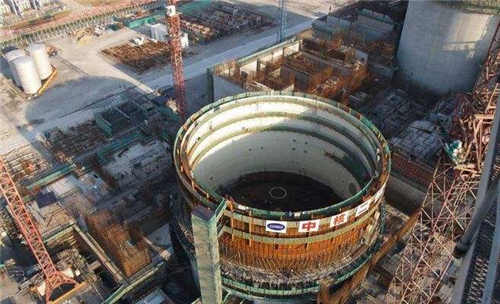 Nuclear power is a safe, clean, economic, and reliable energy source. Replacing part of the fossil fuel with nuclear power to generate electricity will not only keep the fossil fuel for long-term use, but also help to protect the environment and reduce a large amount of fuel transportation. The core of a nuclear power plant is a reactor, which is composed of a core, a reflective layer, a control rod, a reactor vessel, and a shielding layer. High-temperature alloys for nuclear industry mainly refer to high-temperature alloys for reactors. High-temperature alloys are mainly used as heat transfer tubes, component grids and compression springs for pressurized water reactor steam generators, as well as superheater and reheater heat transfer tube parts for high-temperature gas-cooled reactors and some fast reactors.
Nuclear power is a safe, clean, economic, and reliable energy source. Replacing part of the fossil fuel with nuclear power to generate electricity will not only keep the fossil fuel for long-term use, but also help to protect the environment and reduce a large amount of fuel transportation. The core of a nuclear power plant is a reactor, which is composed of a core, a reflective layer, a control rod, a reactor vessel, and a shielding layer. High-temperature alloys for nuclear industry mainly refer to high-temperature alloys for reactors. High-temperature alloys are mainly used as heat transfer tubes, component grids and compression springs for pressurized water reactor steam generators, as well as superheater and reheater heat transfer tube parts for high-temperature gas-cooled reactors and some fast reactors. -
The heat transfer tube of the pressurized water reactor steam generator used 18-8 stainless steel early. However, because austenitic stainless steel is sensitive to stress corrosion, it was later replaced by heat-resistant and corrosion-resistant alloy Inconel 600. Since then, Inconel 690 and Incoloy 800 alloys have been developed. Regarding the advantages and disadvantages of the corrosion resistance of these three alloys, the current views are not uniform, so they are all in use. France prefers Inconel 690 alloy, and Germany mostly uses Incoloy 800 alloy as a heat transfer tube. The evaporator heat transfer tube of Qinshan Nuclear Power Station in my country uses Incoloy 800 alloy, and Daya Bay Nuclear Power Station uses Inconel 690 alloy.
-
The high-temperature gas-cooled reactor steam generator is a spiral tube bundle structure installed inside the prestressed concrete pressure vessel. The temperature of the reheater and superheater is relatively high, and the heat transfer tube uses Incoloy 800 alloy. The temperature of the steam generator and superheater is low (450-340℃), and 2.25Cr-1Mo steel is mostly used for the heat transfer tube.
-
The core cooling pipe is assembled into a fuel stack or component box with a positioning grid and upper and lower tube seats in a set arrangement. Austenitic stainless steel is used as the material for the positioning grid, and the nickel-based high-temperature alloy is mainly used at present.
3. Petrochemical industry
-
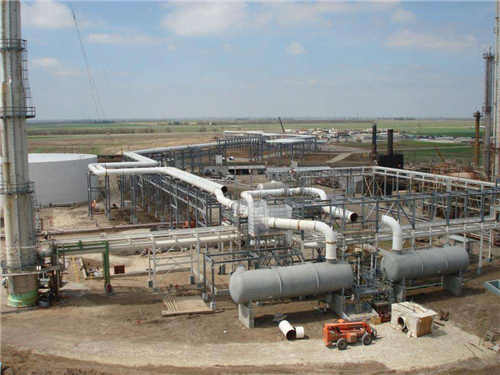 The exploitation of oil and natural gas, especially in deep wells, requires the use of nickel-based advanced superalloys. Because of the poor working environment in deep wells, such as acidic environment, high chloride concentration, hydrogen sulfide gas, and partial gas pressure, the downhole temperature fluctuates in the range of 0-218℃. Therefore, Inconel 718 alloy can be used as injection valves, traditional operation valves, gas lift valves, double chemical injection valves, safety valves and other valves on oil and gas drilling tools. The fluid diverter is made of Inconel 718C casting alloy. Incoloy 925 can produce XLD pipe clamp valve, XLI gas lift valve, XLO-B damping valve, hydraulic equipment nut, etc. Incoloy825 can produce durable eye-opening ropes, rope pipes, hydraulic control pipelines, ferrules for hydraulic equipment, etc. Incoloy 625 can be used as a pipeline for hydraulic equipment. Inconel 600 can be used as a safety partition, etc.
The exploitation of oil and natural gas, especially in deep wells, requires the use of nickel-based advanced superalloys. Because of the poor working environment in deep wells, such as acidic environment, high chloride concentration, hydrogen sulfide gas, and partial gas pressure, the downhole temperature fluctuates in the range of 0-218℃. Therefore, Inconel 718 alloy can be used as injection valves, traditional operation valves, gas lift valves, double chemical injection valves, safety valves and other valves on oil and gas drilling tools. The fluid diverter is made of Inconel 718C casting alloy. Incoloy 925 can produce XLD pipe clamp valve, XLI gas lift valve, XLO-B damping valve, hydraulic equipment nut, etc. Incoloy825 can produce durable eye-opening ropes, rope pipes, hydraulic control pipelines, ferrules for hydraulic equipment, etc. Incoloy 625 can be used as a pipeline for hydraulic equipment. Inconel 600 can be used as a safety partition, etc. -
The flue gas turbine is the core unit of the energy recovery system of the catalytic cracking unit in the refinery. In the production process, about 4%-7% of the raw oil is converted into coke and burned in the regenerator. Except for part of the heat released from the coke used for heating and catalysis, the remaining heat heats the flue gas from the regenerator. The flue gas emitted by the regenerator has a pressure of 98-196 kPa and a temperature of about 650-750°C. A large amount of high-temperature and high-pressure flue gas is introduced into the flue gas turbine, which is converted into shaft work output after expansion work, and drives the air compressor of the refinery or The generator set will recover this part of energy later.
4. Transportation Industry
-
At present, the turbine booster used in civil transportation vehicles such as diesel locomotives or automobiles selects fine-grained equiaxed superalloy blades. Diesel locomotives are mainly produced by CNR Group. In the field of chariots, only the United States currently uses gas turbines as the main battle tank power. The US M1 series tanks are equipped with small gas turbines as power and have high efficiency. Quick start and high horsepower.
-
A large number of high-temperature bolts are used in the ship’s power plant. Due to long-term work at sea, the bolt material is subjected to thermal corrosion accelerated by sea salt components. In addition, because the bolts also bear a lot of tensile stress, stress corrosion is an important factor for bolt failure. Therefore, most structural steel and alloy steel bolts cannot be directly used in ship power plants for a long time. Instead, high-temperature alloys with good corrosion resistance to the marine atmosphere, high temperature corrosion resistance, and good relaxation resistance should be selected for the ship power plant bolts. Optional high-temperature alloys for bolts are: GH132 (A286), GH145 (Inconel X750), GH751 (Inconel751), GH169, GH33A, GH80A (Nimonic80A), GH90 (Nimonic90), MP35N, GH159 (MP159), R26, GH105 ( Nimonic105), GH242, etc.
5. Gas turbine industry
-
Gas turbines have the advantages of high thermal efficiency, less pollution, less water consumption, and easy installation. The combined cycle gas turbine unit can also achieve thermal efficiency as high as 60%, so gas turbines are more and more widely used in the power industry. Advanced materials are the basis and guarantee conditions for the design and manufacturing technology of gas turbines, especially high-temperature materials at the hot end of gas turbines. Without advanced high-temperature materials, it is impossible to design and manufacture advanced gas turbines. Advanced superalloys occupy an extremely important position in gas turbine materials, and are widely used in gas turbine combustion chambers, excessive ducts, guide blades, turbine working blades, and turbine disks.
-
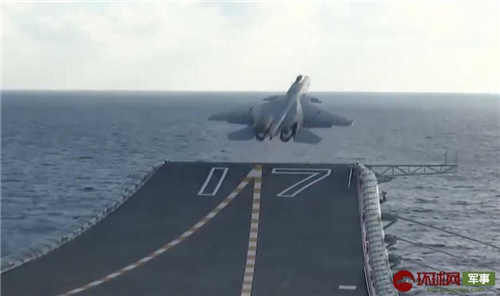 The development technology of gas turbines has been monopolized by multinational giants such as GM of America, Mitsubishi of Japan, Siemens of Germany and Alstom of France. From the perspective of the heavy-duty gas turbines currently in operation in China, my country’s power generation equipment manufacturing industry does not currently have the capability of independent manufacturing of gas turbines and the maintenance and manufacturing capabilities of hot end components. This technology is strictly kept secret abroad, which seriously restricts the development of my country’s heavy gas turbines. The gas turbines produced in my country can be divided into two categories: one is the imported type, and the other is the independent research and development type. All imported hot end components of imported gas turbines are imported, and the import price of heavy-duty gas blade products is 1 billion yuan/ton. The cost of this part accounts for 25% to 30% of the entire gas turbine. At the same time, the corresponding service contract will be signed, and all the accessories will be provided by the original manufacturer. At the same time, when foreign companies sell and maintain the hot end parts of gas turbines, they will require the signing of a supplemental equipment maintenance agreement. All parts within the warranty period (generally 10 years) must use original parts, which may be higher than the equipment itself. The picture shows the application of advanced superalloys for the main components of industrial turbines.
The development technology of gas turbines has been monopolized by multinational giants such as GM of America, Mitsubishi of Japan, Siemens of Germany and Alstom of France. From the perspective of the heavy-duty gas turbines currently in operation in China, my country’s power generation equipment manufacturing industry does not currently have the capability of independent manufacturing of gas turbines and the maintenance and manufacturing capabilities of hot end components. This technology is strictly kept secret abroad, which seriously restricts the development of my country’s heavy gas turbines. The gas turbines produced in my country can be divided into two categories: one is the imported type, and the other is the independent research and development type. All imported hot end components of imported gas turbines are imported, and the import price of heavy-duty gas blade products is 1 billion yuan/ton. The cost of this part accounts for 25% to 30% of the entire gas turbine. At the same time, the corresponding service contract will be signed, and all the accessories will be provided by the original manufacturer. At the same time, when foreign companies sell and maintain the hot end parts of gas turbines, they will require the signing of a supplemental equipment maintenance agreement. All parts within the warranty period (generally 10 years) must use original parts, which may be higher than the equipment itself. The picture shows the application of advanced superalloys for the main components of industrial turbines.
6. Conclusion
-
With the continuous maturation of high-temperature alloy technology, the application of high-temperature alloy will be more and more extensive. While perfecting the high-temperature alloy system, we also need to establish and improve the standards for high-temperature alloys for aviation in China. By carrying out basic research on standardization, strengthening standardization in the development of new materials, improving the advancement and applicability of standards and revisions, improving general material standards, and strengthening the formulation of supporting material standards, so as to better meet the needs of China’s aerospace engine production and development . Only by perfecting the standard system, vigorously developing new materials, improving the performance of old materials, and perfecting the preparation process can we shorten the gap with other high-temperature alloy leading countries such as the United States, Japan, and France, and increase China’s competition in the field of high-temperature alloys To ensure the development of China’s aviation and military fields and enhance China’s right to speak in international affairs.

